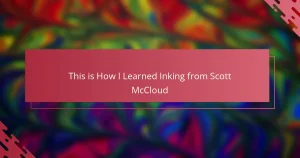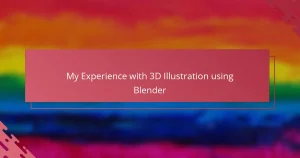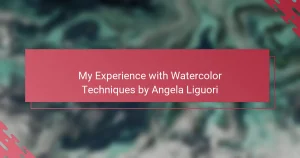Key takeaways
- Combining photomanipulation and illustration enhances creativity by merging realism with imaginative freedom, allowing artists to express complex ideas more effectively.
- Utilizing tools like Photoshop and drawing tablets streamlines the integration of photo and illustration elements, creating a more natural workflow.
- Planning is crucial for successful hybrid artwork, helping to balance photographic authenticity with artistic creativity and ensuring a cohesive final piece.
- Personalizing style through experimentation and the use of consistent visual motifs fosters a unique artistic identity that evolves over time.
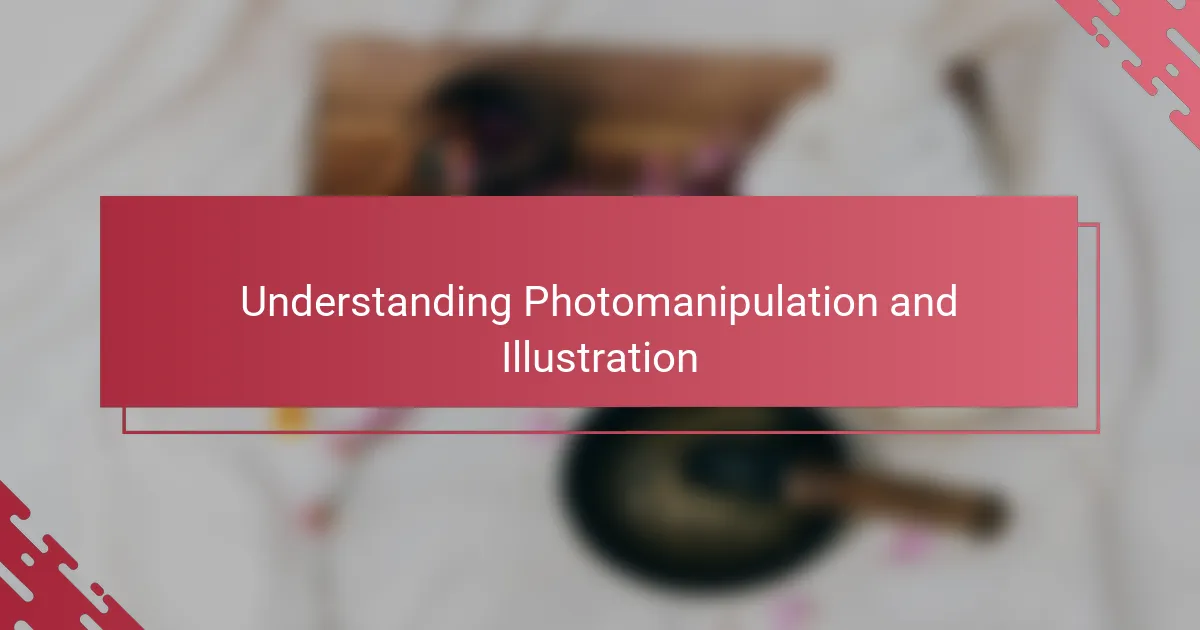
Understanding Photomanipulation and Illustration
Photomanipulation and illustration might seem like distant cousins in the art world, but I found they actually share a common language. Photomanipulation involves transforming photographs to create something new and unexpected, almost like telling a visual story through bending reality. Illustration, on the other hand, is more about crafting an image from scratch, using imagination to build worlds that don’t yet exist.
When I first started combining these two, I asked myself: how can I keep the authenticity of a photograph while injecting the freedom of illustration? It felt like balancing between control and creativity, where photomanipulation anchors the piece in something real, and illustration lets me explore the surreal. That push and pull is what makes the process exciting and deeply personal for me.
Have you ever felt limited by sticking to one style? I did, until I realized that photomanipulation and illustration together open doors I didn’t know existed. They blend technical skill with artistic expression, giving me endless ways to communicate ideas that a single medium alone couldn’t capture.
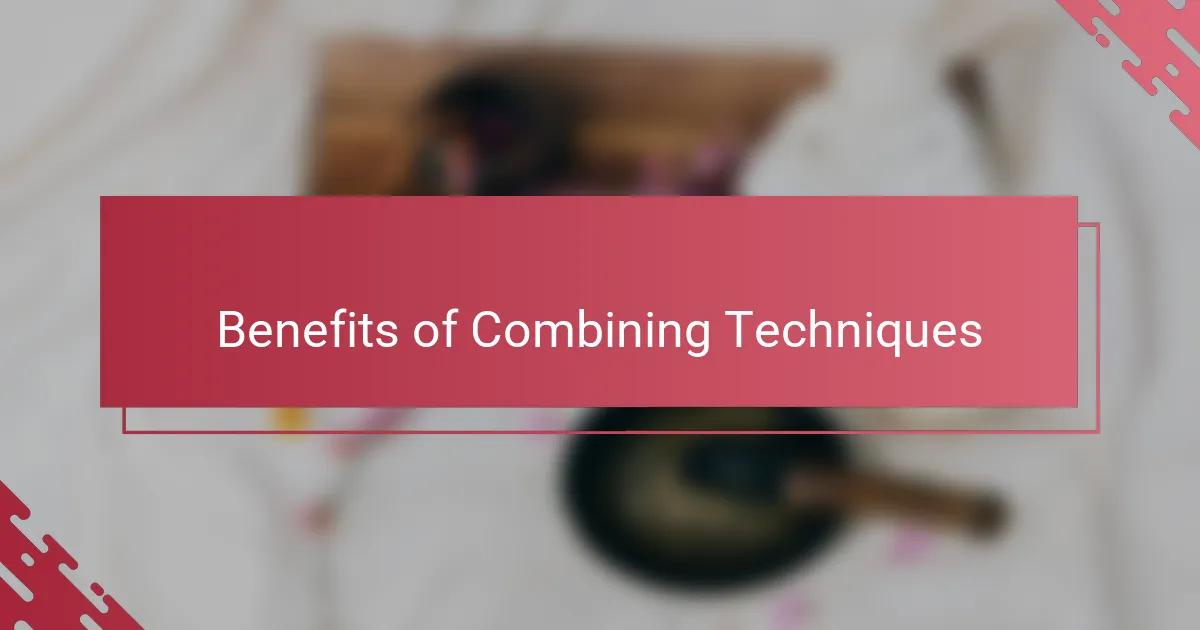
Benefits of Combining Techniques
Combining photomanipulation with illustration has expanded my creative toolbox in ways I never anticipated. It’s like having the best of both worlds—photomanipulation grounds the piece with real textures and depth, while illustration adds that spark of imagination that photography alone can’t provide. This blend often leads to unexpected visual surprises that keep me excited throughout the process.
Have you ever felt stuck trying to express a complex idea? I have, and merging these techniques helped me break through those walls. The flexibility to switch between editing photos and drawing elements directly onto the canvas allows me to convey emotion and narrative more powerfully than sticking to just one method.
What I appreciate most is how this combination challenges my skill set continuously. It forces me to think differently about composition, color, and mood because I’m no longer confined by the rules of a single medium. That creative freedom not only improves my work but also keeps me deeply engaged and motivated.
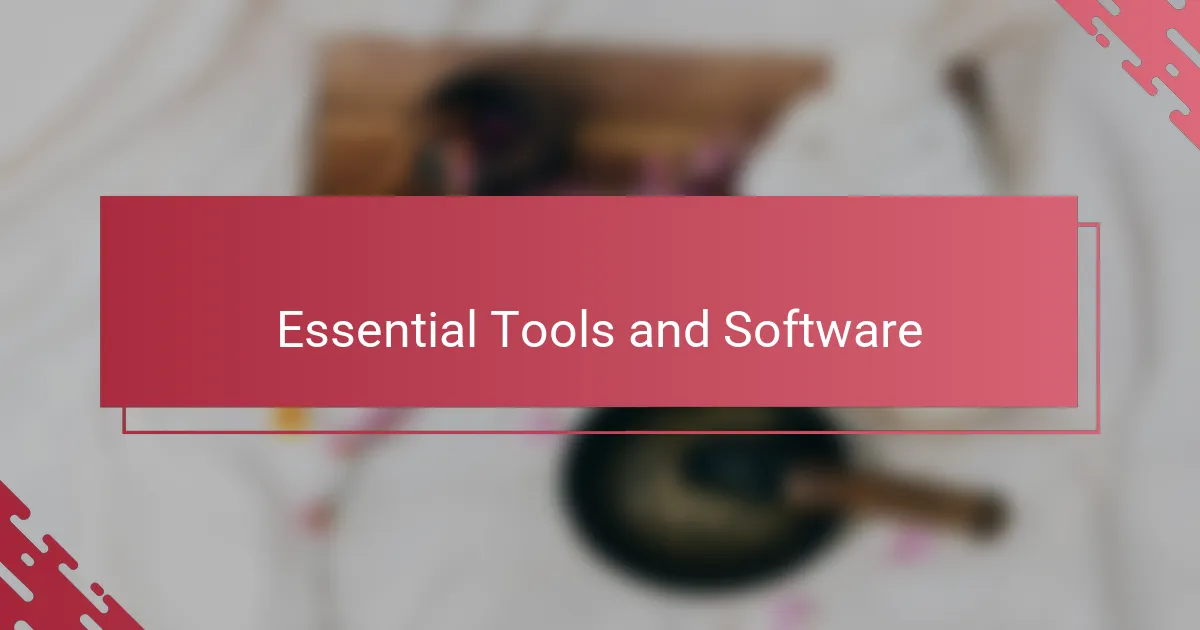
Essential Tools and Software
For me, having the right tools felt like unlocking a new level in my creative journey. Photoshop quickly became indispensable—not just for its powerful photomanipulation capabilities but also because it lets me paint over images seamlessly, blending illustration and photo elements like second nature. Have you ever experienced that moment when a tool just feels like an extension of your hand? That’s exactly what happened with Photoshop; it made merging these two worlds effortless.
Alongside Photoshop, I rely heavily on a drawing tablet. There’s something about using a stylus that brings back the tactile joy of sketching while giving me precision digital control. When I’m outlining or adding fine illustrated details, the tablet allows me to capture every subtle nuance, something a mouse just can’t replicate. The flow between drawing and editing feels so much more natural, and that ease has been a game-changer in my workflow.
Of course, no creative process is complete without some experimental software. Occasionally, I dabble with digital painting apps like Procreate or Corel Painter, especially when I want to explore textures and brush effects that Photoshop doesn’t naturally offer. This mix of software broadens my palette and keeps my work from becoming too predictable. Don’t you find it exciting when a new app opens doors you didn’t realize were there? That curiosity drives innovation in my pieces every time.
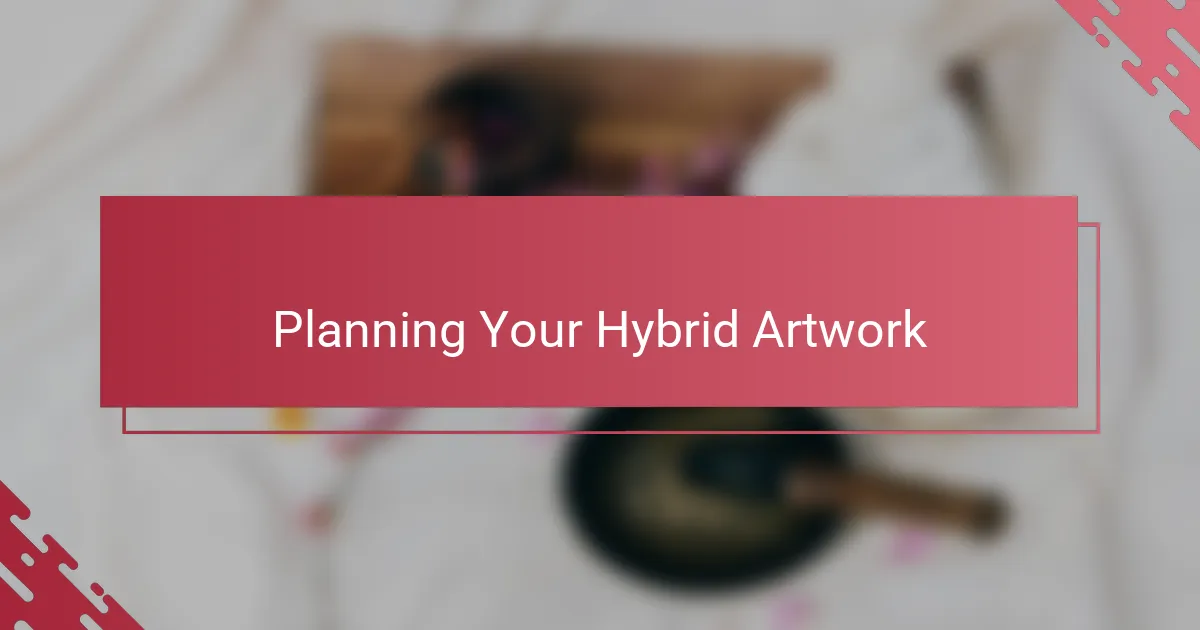
Planning Your Hybrid Artwork
Planning any hybrid artwork begins with a clear vision of how photomanipulation and illustration will coexist. I often start by pinpointing which parts of the image should feel anchored in reality and where I want to unleash creative freedom through hand-drawn elements. This groundwork saves me from second-guessing during the messy middle of the creative process.
I like to sketch rough thumbnails before diving into digital tools—just quick layouts to explore composition and balance. Have you ever noticed how a few simple lines can unlock ideas you didn’t realize were there? Those initial sketches guide me in making intentional choices about blending photographic textures with illustrative details, ensuring neither overwhelms the other.
Another crucial step I’ve discovered is setting boundaries for the piece early on. Deciding which parts remain true to the original photo, and which can be dramatically altered, helps me maintain harmony. Otherwise, the artwork risks feeling chaotic instead of cohesive. I see this planning as the invisible thread weaving the two mediums into a unified story.
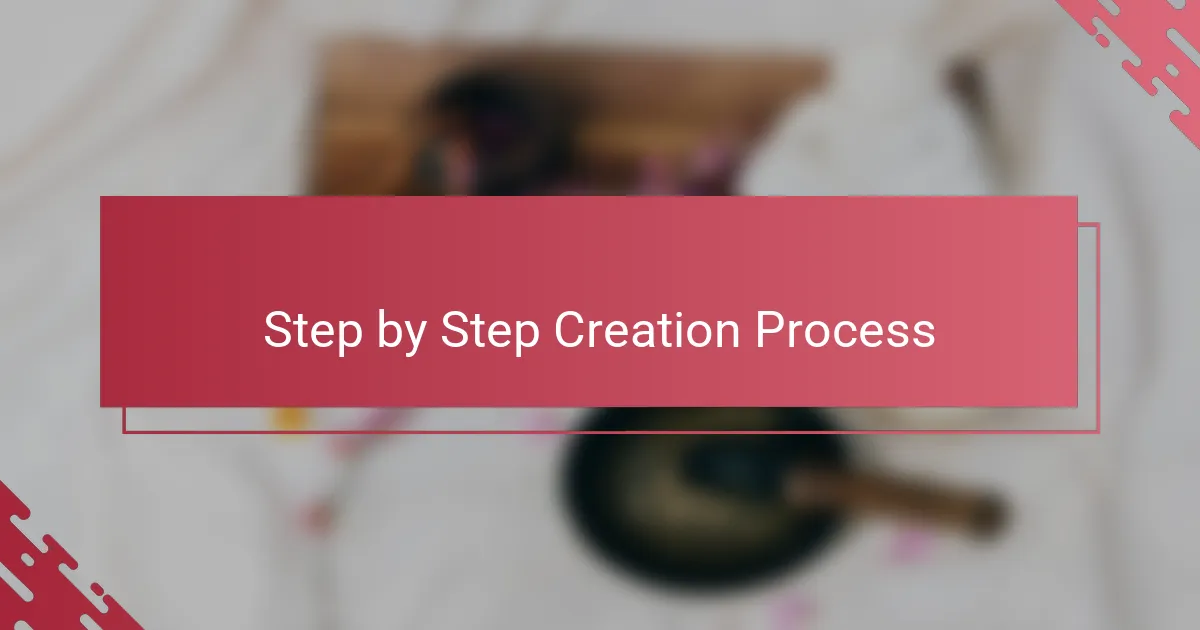
Step by Step Creation Process
Starting the creation process, I usually begin by isolating key photographic elements that will serve as the backbone of the piece. It’s like choosing the foundation stones before building a house—I want the photo to feel solid, even when I layer in whimsical illustrations. Have you ever tried working without this step? For me, it often leads to unnecessary detours and frustration.
Next, I jump into sketching directly over the photo, using my tablet to bring in illustrative details that complement or contrast the original image. There’s a satisfying moment when the rough sketches start to breathe life into the stillness of a photograph—almost like watching two different languages begin a conversation. This phase is where I experiment freely, tweaking colors and shapes until the balance feels right.
Finally, the refining stage demands both patience and intuition. I zoom in to blend edges, adjust shadows, and enhance textures so that the photo and illustration don’t just sit side by side but truly merge into a seamless narrative. Sometimes I ask myself, “Does this feel natural or forced?” That question keeps me honest, pushing me to fine-tune until the piece resonates on its own terms.
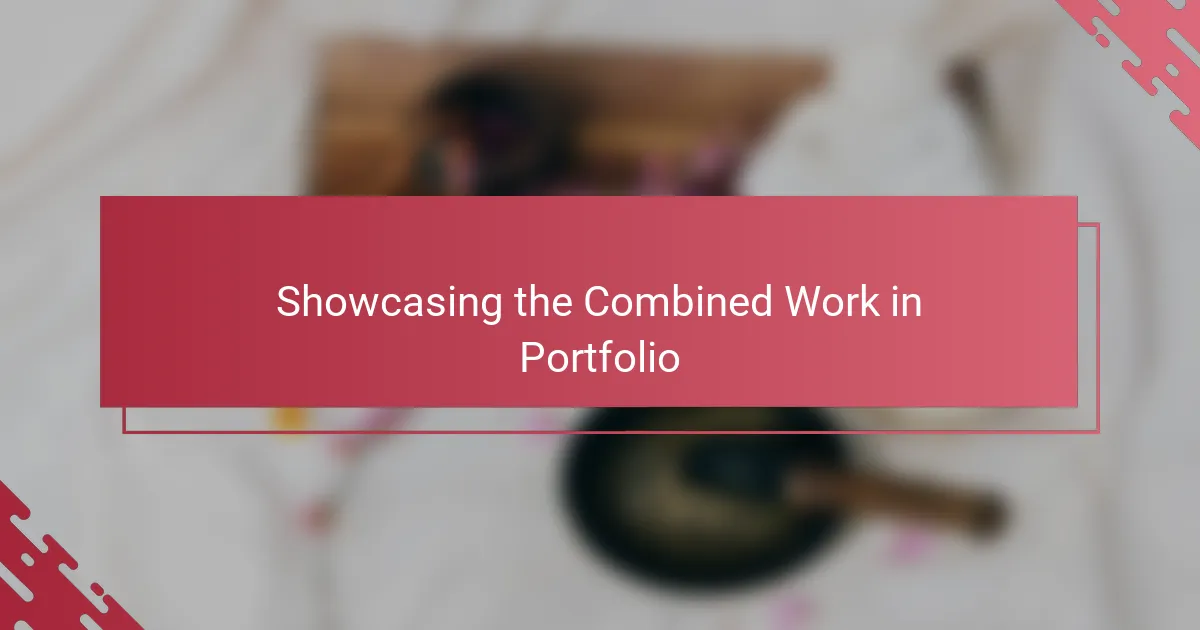
Showcasing the Combined Work in Portfolio
Showing this combined work in my portfolio is like telling a story about the journey I’ve taken blending photomanipulation and illustration. I try to arrange pieces so viewers can see the gradual interplay between photography’s realism and the imaginative layers of illustration. Don’t you think a portfolio should feel like a curated experience rather than just a collection?
I often include before-and-after images or process snippets, which let me reveal those “aha” moments where the two techniques really click together. Sharing these behind-the-scenes glimpses helps others understand the careful balance and creative decisions behind each piece—something I believe makes the work more relatable and impactful.
Another key for me is grouping similar hybrid works to create visual rhythm across the portfolio. When viewers flip through, they get a sense of my evolving style and how I explore different narratives through this combination. Have you noticed how a well-thought-out sequence can transform browsing into an engaging story rather than random viewing? That’s the feeling I strive for.
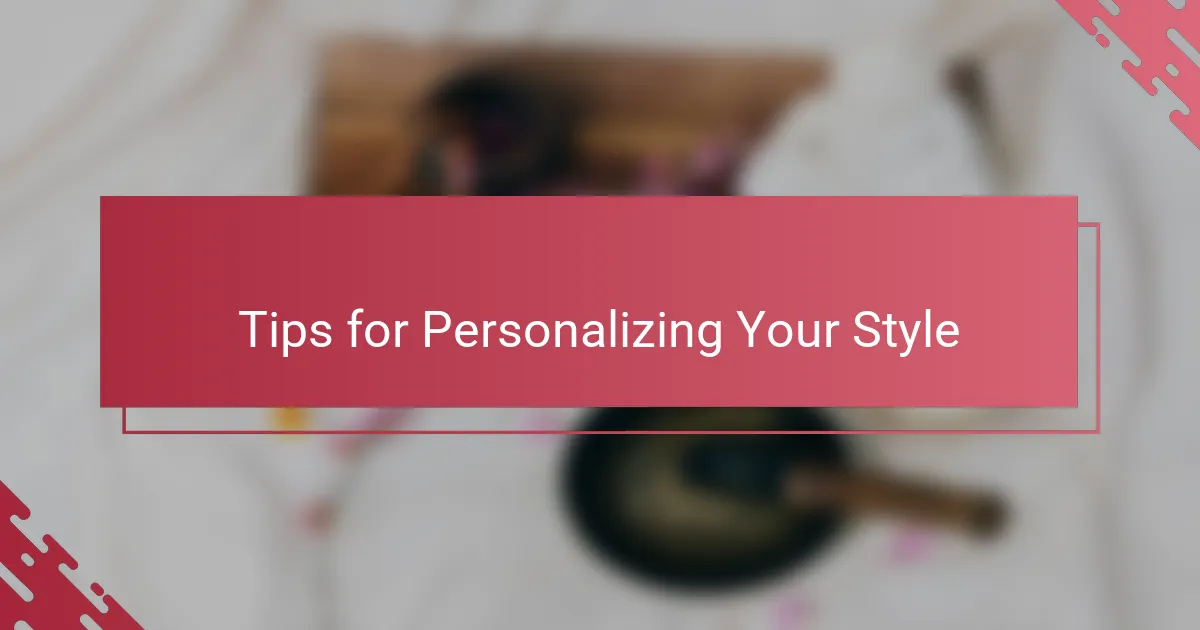
Tips for Personalizing Your Style
Finding your unique style felt like a puzzle I had to solve through constant experimentation. What I realized is that mixing photomanipulation with illustration allows you to selectively emphasize elements that resonate with you emotionally. Have you ever noticed how certain textures or brush strokes suddenly feel like ‘your’ signature? That moment of recognition fuels the confidence to lean into what makes your work distinct.
I also learned that personalizing style isn’t about forcing a formula but about listening to your instincts during the creative process. Sometimes, I catch myself deviating from initial plans because a spontaneous idea just feels right—integrating unexpected color splashes or surreal details that reflect my mood that day. Embracing these happy accidents injected personality into my pieces far more than strict adherence to technique ever could.
Lastly, I recommend developing a small vocabulary of visual motifs or themes that you return to repeatedly. For me, it’s subtle shadows and hand-drawn line work that weave through my art, giving a cohesive thread amid the mix of real and imagined. What repeated elements keep appearing in your work? Spotting these can guide you to a recognizable, personalized style that grows naturally over time.
